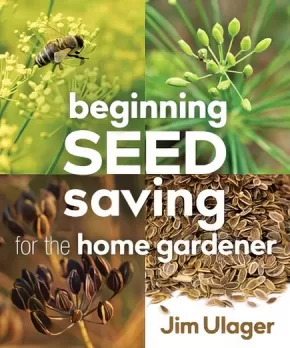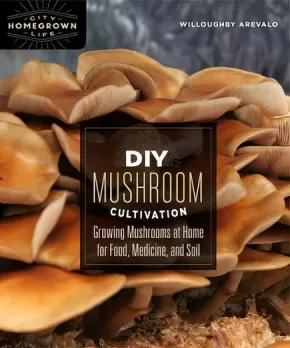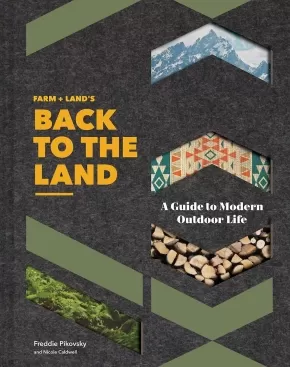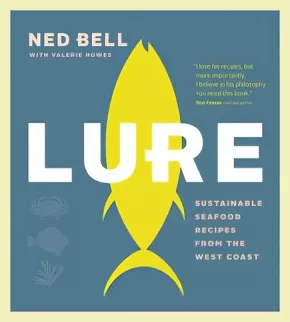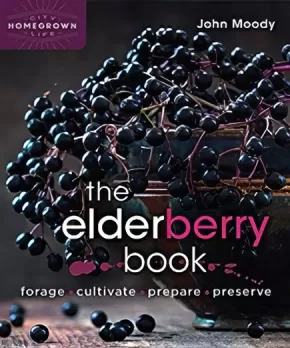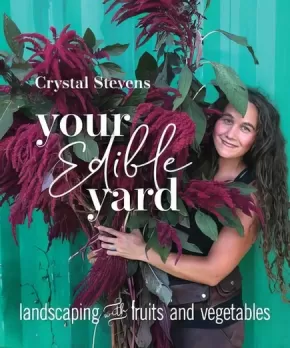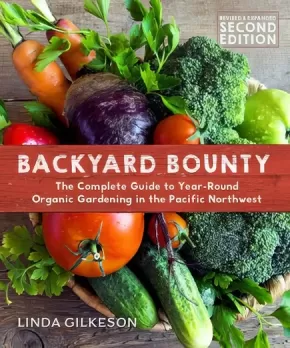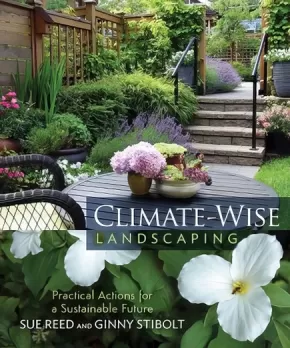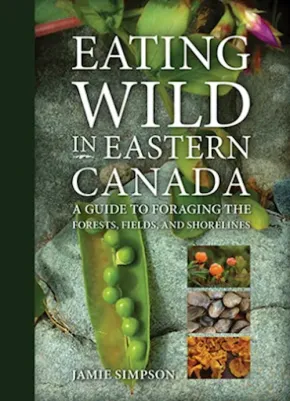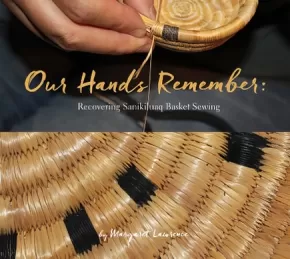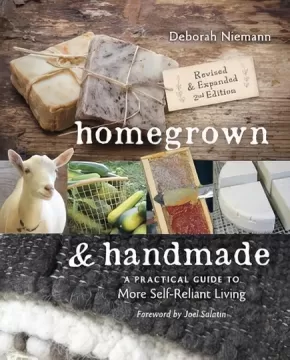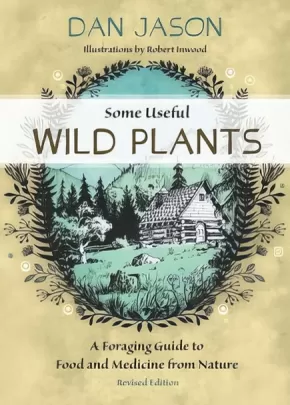Homesteading
Synopsis:
How home gardeners with little time or space can reclaim the joy and independence of seed saving.
Many home gardeners refuse to eat a grocery store tomato, but routinely obtain seeds commercially, sometimes from thousands of miles away. And while seed saving can appear mysterious and intimidating, even home gardeners with limited time and space can experience the joy and independence it brings, freeing them from industry and the annual commercial seed order.
Beginning Seed Saving for the Home Gardener explores how seed saving is not only easier than we think, but that it is essential for vibrant, independent, and bountiful gardens. Coverage includes:
- Why seed saving belongs in the home garden
- Principles of vegetative and sexual reproduction
- Easy inbreeding plants, including legumes, lettuce, tomatoes, and peppers
- Plants with a few more challenges, including squash, spinach, onions, and parsley
- Brief discussion of more difficult crops, including corn, carrots, and cabbage.
Written by a home seed saver for the home seed saver, Beginning Seed Saving for the Home Gardener is a comprehensive guide for those who want to reclaim our seed heritage, highlighting the importance of saving seeds for you, your neighbors, and most importantly, subsequent generations.
Additional Information
96 pages | 7.50" x 9.00" | 58 illustrations
Synopsis:
Bring mushrooms into your life as you dive into the practice of home-scale mushroom cultivation.
With applications in permaculture, urban farming, cooking, natural medicine, and the arts, interest in home-scale mushroom cultivation is exploding. Yet many beginners remain daunted by the perceived complexity of working with fungi.
DIY Mushroom Cultivation is the remedy, presenting proven, reliable, low-cost techniques for home-scale cultivation that eliminate the need for a clean-air lab space to grow various mushrooms and their mycelium.
Beautiful full-color photos and step-by-step instructions accompany a foundation of mushroom biology and ecology to support a holistic understanding of the practice. Growing techniques are applicable year-round, for any space from house to apartment, and for any climate, budget, or goal. Techniques include:
- Setting up a home growing space
- Inexpensive, simple DIY equipment
- Culture creation from mushroom tissue or spores
- Growing and using liquid cultures and grain spawn
- Growing mushrooms on waste streams
- Indoor fruiting
- Outdoor mushroom gardens and logs
- Harvesting, processing, tinctures, and cooking.
Whether you hunt mushrooms or dream about growing and working with them but feel constrained by a small living space, DIY Mushroom Cultivation is the ideal guide for getting started in the fascinating and delicious world of fungiculture.
Series Information
This book is part of the Homegrown City Life Series:
You’d like to be self-sufficient, but the space you have available is tighter than your budget. If this sounds familiar, the Homegrown City Life series was created just for you! Authors of this series will help you navigate the wide world of homesteading, regardless of how big (or small!) your space and budget may be. Topics range from cheesemaking to gardening and composting—everything the budding urban homesteader needs to succeed!
Increase your self-reliance:
- Take back DIY skills
- Work with the space you have, apartment balcony or suburban backyard
- Learn about fermenting, crafting, growing, preserving, and other skills for the urban homesteader.
Additional Information
208 pages | 7.50" x 9.00"
Synopsis:
FARM + LAND'S Back to the Land: A Modern Guide to Outdoor Life is a collection of stories about slow living, sustainability, and the value of doing things with your own two hands.
This gorgeous book features remarkable narratives, essential how-tos, and hundreds of breathtaking photographs from people who have embraced lives of adventure in wild places.
With gorgeous photography, engaging stories, practical tips, and useful illustrations, this book offers an escape into a world of simple pleasures, contentment, and a rural way of life.
- Focuses on the back-to-the-land movement
- A visually driven celebration of cozy homes and wild landscapes
- Embraces life's simple and enduring pleasures
FARM + LAND'S Back to the Land: A Modern Guide to Outdoor Life features places like a spectacular treehouse suspended above a lush forest, a cozy cabin perched on a mountainside, and a small farm growing heirloom vegetables in the high desert.
This book is a must-have for outdoor enthusiasts and anyone who has ever dreamed of escaping to a simpler way of life.
- Delivered in a highly giftable and handsome volume that inspires feelings of wanderlust.
- The perfect gift for Father's Day and the holidays, as well as for outdoors enthusiasts, travel lovers, camping fans, and readers of Dwell, Modern Farmer, and Kinfolk.
- Includes information on homesteading and outdoor skills such as how to build a desert vegetable garden; how to cut, split, and stack firewood; how to build a wood-fired hot tub; how to raise chickens and honeybees; how to make essential oils; and more!
Additional Information
272 pages | 7.65" x 9.60" | 350 full-colour photographs
Synopsis:
Eating sustainable seafood is about opening your mind (and fridge) to a vast array of fish and shellfish that you might not have considered before - and the Pacific Coast is blessed with an abundance of wild species. With Lure, readers embark on a wild Pacific adventure and discover the benefits of healthy oils and rich nutrients that seafood delivers. This stunning cookbook, authored by chef and seafood advocate Ned Bell, features simple techniques and straightforward sustainability guidelines around Pacific species as well as 80 delicious recipes to make at home. You'll find tacos, fish burgers, chowders, and sandwiches- the types of dishes that fill bellies, soothe souls and get happy dinner table conversation flowing on a weekday night - as well as elegant (albeit still simple-to-execute) dinner party options, such as crudo, ceviche, and caviar butter.
Reviews
“Ned’s first cookbook Lure features a set of sustainable seafood recipes that are accessible, well considered and, most importantly, delicious.” – Michael Cimarusti, Michelin-starred chef of Providence
“Ned Bell is one of that laudable cadre of young chefs who has taken the trouble to learn not only the names of his farmers but also his fishers. If, like me, you’re committed to sustaining the health of the oceans, you’ll grab this book that shows you how to cook all the responsibly-harvested gifts of the sea.” – Tom Douglas, American executive chef, restaurateur, author, and radio talk show host.
“I’m going to go out on a limb and suggest that Lure is the most important cookbook of the year, if not the decade.” – Tim Pawsey, Hired Belly
“Lure is at once a cookbook, coffee table showpiece, and educational manual. With straightforward recipes and a digestible approach to ocean sustainability, Lure is a beautiful and accessible guide for the conscientious cook.” – NUVO Magazine
“It should come as no surprise that Lure, his first cookbook, co-written with ace writer Valerie Howes, is just wonderful too. It’s a beauty of book—bright, full of gorgeous imagery and laid out in an attractive easy-to-understand style” – BC Living
Additional Information
304 pages | 9.14" x 9.99"
Synopsis:
The devil is in the details-the science and art of designing and building durable, efficient, straw bale buildings.
Straw-bale buildings promise superior insulation and flexibility across a range of design aesthetics, while using a typically local and abundant low-embodied energy material that sequesters carbon--an important part of mitigating climate change.
However, some early strawbale designs and construction methods resulted in buildings that failed to meet design goals for energy efficiency and durability. This led to improved building practices and a deeper understanding of the building science underlying this building system.
Distilling two decades of site-built straw bale design and construction experience, Straw Bale Building Details is an illustrated guide that covers:
- Principles and process of straw bale design and building, options, and alternatives
- Building science of straw bale wall systems
- How design impacts cost, building efficiency, and durability
- Avoiding costly mistakes and increasing construction efficiency
- Dozens of time-tested detailed drawings for straw bale wall assemblies, including foundations, windows and doors, and roofs.
Whether you're an architect, engineer, contractor, or owner-builder interested in making informed choices, Straw Bale Building Details is the indispensable guide to current practice in straw bale design and construction.
Additional Information
288 Pages | 8.60" x 11.00"
Synopsis:
Your go-to guide for everything from cultivation to wine-making with one of humanity's oldest plant friends
Once a staple in homes across the world, and found along every highland, highway, and hedgerow, the forgotten elderberry is making a comeback. Its popularity as medicine is surging, its choice as an edible landscaping plant is growing, and its use for wine-making and crafts is being rediscovered.
Spanning history and geography, The Elderberry Book takes you on an adventure, deepening your appreciation of a plant that has played a crucial role across the world for thousands of years. Through this fun, inspirational, and educational resource, discover:
- Elderberry's amazing history
- Cultivating and foraging, from the balcony to the backyard
- Various traditional food and medicine preparations
- Simple wine-making techniques
- Traditional crafts and tools.
This is the definitive guide to the many uses of elderberry; no matter where you are, one of humankind's oldest plant friends can provide you with anything from syrup to wine to dyes, and more.
This book will be of interest to homesteaders, gardeners, herbalists, and people interested in folk history and crafts.
Educator & Series Information
Elderberries trees are widespread and naturalized in temperate Canadian regions including the Maritimes, British Columbia, and Ontario.
Useful, fun, inspirational and educational book that covers history, cultivation, foraging, traditional use, medicines, herbal remedies and tools from the elderberry tree.
Includes:
- Recipes
- Plans for crafts made from elderberry wood including a flute, a pencil, and even a bug hotel.
- Professional illustrations and full-colour photographs.
This book is part of the Homegrown City Life Series:
You’d like to be self-sufficient, but the space you have available is tighter than your budget. If this sounds familiar, the Homegrown City Life series was created just for you! Authors of this series will help you navigate the wide world of homesteading, regardless of how big (or small!) your space and budget may be. Topics range from cheesemaking to gardening and composting—everything the budding urban homesteader needs to succeed!
- Increase your self-reliance
- Take back DIY skills
- Work with the space you have, apartment balcony or suburban backyard
Learn about fermenting, crafting, growing, preserving, and other skills for the urban homesteader.
Additional Information
128 pages | 7.50" x 9.00"
Synopsis:
The Skillful Forager is the ultimate forager’s guide to working with any wild plant in the field, kitchen, or pantry.
From harvesting skills that will allow you to gather from the same plant again and again to highlighting how to get the most out of each and every type of wild edible, trusted expert Leda Meredith explores the most effective ways to harvest, preserve, and prepare all of your foraged foods. Featuring detailed identification information for over forty wild edibles commonly found across North America, the plant profiles in this book focus on sustainable harvesting techniques that can be applied to hundreds of other plants. This indispensable reference also provides simple recipes that can help you make the most of your harvest each season.
Reviews
"This is a book that needed to be written—an invaluable resource for anyone who wants to be more than an armchair forager." —Hank Shaw, author of Hunt, Gather, Cook
"Identification is the first task of the forager, but what comes next? It turns out, almost everything. How does one select the best berries, the tenderest greens, the freshest mushrooms, and gather them in an ecologically responsible manner? What is the most practical way to clean, crack, or pit them? How can they be stored? In The Skillful Forager, Leda Meredith answers just these questions, laying out the basic skills that she has perfected through decades of gathering wild plants and using them in the kitchen. She leaves readers with a set of practical, simple, healthy, and delicious recipes that can be adapted to a variety of ingredients, wild or domestic—just the way that real home cooks cook everyday food. Because to Leda, that’s what foraged food is." —Samuel Thayer, author of The Forager’s Harvest
"In The Skillful Forager, Leda Meredith doesn’t just describe some of her favorite wild edibles, she lays the groundwork for you to become a better forager. Leda covers recommended plants and mushrooms, safe and mindful harvesting, and wraps it all up by describing multiple cooking and preservation techniques we all can use to make the most of our harvests. The Skillful Forager takes you from field to table with excellent information, inspiring ideas, and lots of fabulous flavor." —Ellen Zachos, author of Backyard Foraging
Additional Information
296 pages | 6.51" x 8.98"
Synopsis:
Unleash the potential of your yard by transforming it into a beautiful and vibrant space offering a continuous supply of food
Journey into the good food movement by unleashing the potential of your yard, transforming it into a beautiful and vibrant space that offers a continuous supply of food.
Using dozens of beautiful color photographs and watercolor planting charts, infographics, and landscaping designs, Your Edible Yard is the comprehensive how-to guide you need to turn your yard into a bountiful feast.
It features:
- Practical gardening methods and maintenance from weeding to wintering, including foodscaping, container gardening, and saving seeds
- Permaculture principles including soil building techniques, garden preparation, raised beds, and natural/non-toxic DIY pesticide alternatives
- How to integrate culinary and medicinal herbs, edible flowers, mushrooms, fruits, vegetables, and wild edibles
- Gardening resources: where to go for help, buy seeds, and source supplies on a budget
- Instructions on preserving, fermenting, freezing, drying, and making simple medicines
- General tips, such as how to find loopholes in laws preventing edible front yards.
Whether you're a beginner or experienced gardener in the city, the suburbs, or the country, this manual is the A-Z guide for how to make use of the space you have, highlighting the colorful and abundant array that edible landscapes promise.
Additional Information
208 pages | 7.50" x 9.00"
Synopsis:
Grow more food, with less work, in any yard – now completely revised and expanded!
Are you itching to start your own garden or grow more in the one you have, but feel that gardening is too challenging or time-consuming for your busy schedule?
Now completely updated and expanded, Backyard Bounty will demystify gardening, bringing it back to the down-to-earth, environmentally practical activity that anyone can enjoy.
Author and master gardener Linda Gilkeson covers everything you'll need to grow a successful garden, including:
- Planning your garden and preparing the soil
- Organic fertilizers and simplified composting
- Planting for winter harvests and intensive planting schedules
- Comprehensive information on pests, diseases, and working with an unstable climate
- Greenhouses, tunnels and containers
- Organic pest management.
Packed with a wealth of information specific to the Pacific Northwest, this complete guide emphasizes low-maintenance methods, covers problems related to common pests and climate concerns, includes a monthly garden schedule for year-round planting and harvesting, and features plant profiles for everything from apples to zucchini.
Perfect for novice and experienced gardeners alike, Backyard Bounty shows how even the smallest garden can produce a surprising amount of food twelve months of the year.
Reviews
"Backyard Bounty is very likely the best book ever written on growing food in the Pacific Northwest, and it sets a whole new standard for garden writing. By acknowledging the impacts of climate change on our gardens, Gilkeson further elevates the literature. This is the first “real time” gardening book. It is fresh and timely, and every page courses with practical advice and revelations. All growers should own this amazing and insightful book, and we should refer back to it often." —Mark Macdonald, West Coast Seeds
"Ideal for both new and seasoned gardeners, this new edition adds more listings to the detailed fruit and vegetable profiles, updates variety choices, and supplies practical information on dealing with common pests and diseases, including new ones to our region. Tips on adapting gardening practices to changing weather patterns are eminently helpful, as is a focus on the soil as a life force that fosters health in plants." —Helen Chesnut, Garden columnist, Times Colonist
"Whether you have a small or large lot, little or plenty of time, this book shows you how to grow your own toxic-free fruit and vegetables the whole year-round. From preparing the ground to harvesting and storing the ripened produce, all is clearly explained. An invaluable book for novices and experienced gardeners". —Barry Roberts, Past-President, Master Gardeners Association of BC
Additional Information
384 pages | 7.50" x 9.00" | 120 b&w illustrations and photographs
Synopsis:
What can we do, right now, in our own landscapes, to help solve climate change?
Predictions about future effects of climate change range from mild to dire - but we're already seeing warmer winters, hotter summers, and more extreme storms. Proposed solutions often seem expensive and complex, and can leave us as individuals at a loss, wondering what, if anything, can be done.
Sue Reed and Ginny Stibolt offer a rallying cry in response - instead of wringing our hands, let's roll up our sleeves. Based on decades of experience, this book is packed with simple, practical steps anyone can take to beautify any landscape or garden, while helping protect the planet and the species that call it home. Topics include:
- Working actively to shrink our carbon footprint through mindful landscaping and gardening
- Creating cleaner air and water
- Increasing physical comfort during hotter seasons
- Supporting birds, butterflies, pollinators, and other wildlife.
This book is the ideal tool for homeowners, gardeners, and landscape professionals who want to be part of the solution to climate change.
Reviews
"Sue Reed and Ginny Stibolt bring complementary backgrounds to bear on the subject of how we can adapt our landscapes to a changing climate. Starting from the premise that the impacts of climate change will only become more severe in the future, the authors have created a comprehensive book that outlines dozens of actions that people can take to adjust to evolving climate regimes. In the process, they articulate a new gardening aesthetic for people who work with small garden plots, farms and woodlots. The result is a positive and hopeful story of how people can use their imagination and ingenuity to help craft more resilient landscapes." -Dr. Peter Robinson, former CEO, David Suzuki Foundation
"Climate-Wise Landscaping is a comprehensive, yet easy to read, source of information on climate-change adaptation and mitigation actions for the homeowner, gardener, and landscape professional. Beautiful photos and pleasing graphics illustrate key ideas and actions while informative sidebars and inspiring quotes from climate and landscape experts provide clarity of complex systems and motivation to adapt to a changing future. The text provides an engaging blend of broad ideas along with specific actions we can take to adapt to climate-change at the level of our home landscapes, whether a small garden plot within an urban area or twenty acres in the countryside." -Julie Richburg, Ph.D., Ecologist
"Given the lateness of the hour, a book on climate-wise landscaping could not be more timely or more necessary. We are moving into a new and critical era, and this book takes landscape professionals and home gardeners where they need to go. The facts, well-presented and practical, will be an eye-opener for many people, and empower us as horticulturists of all stripes to do what is both helpful and imperative. Landscaping has always been more than just exterior decorating, and now we have one more tool in our kit to make the landscape ecosystem a part of the solution. Thank you, Sue and Ginny, for hitting a home run." -Owen Dell RLA, ASLA, landscape architect, educator, author, Owen Dell & Associates
"Gardening is not always as green and good for the planet as we might think. Sue Reed and Ginny Stibolt open our eyes to surprisingly common, unsustainable landscaping practices and inspire us to rethink how we create and care for land. This fantastic resource is filled with climate-wise solutions for anyone who owns or manages a piece of ground – even if it’s just a few containers on a tiny rooftop garden. You will quickly learn about exiting ways to offset some of the effects we people have on the planet. The book is easy to navigate and it passionately links better gardening practices with better life quality and a brighter future for our planet." -Claudia West ASLA, Principal, PHYTO STUDIO LLC
Additional Information
320 pages | 7.50" x 9.00" | full colour throughout
Synopsis:
From fiddleheads to spruce tips, wild food can be adventurous and fun--with the right guide. In Eating Wild in Eastern Canada, award-winning author and conservationist Jamie Simpson shows readers what to look for in the wilds and how and when to collect it.
Grouping foods by their most likely foraging locations—forests, fields, and shorelines—and with 50 full-colour photographs, identification is made accessible for the amateur hiker, wilderness enthusiast, and foodie alike. Includes historical notes and recipes, cautionary notes on foraged foods' potential dangers, and interviews with wild-edible gatherers and chefs. While gathering wild edibles may be instinctive to some, there is an art to digging for soft-shelled clams and picking highbush cranberries, and Simpson joyfully explores it in this one-of-a-kind narrative guidebook.
Additional Information
152 pages | 6.50" x 9.00" | Paperback
Synopsis:
Sanikiluaq, a small Inuit community in the Belcher Islands region of the Far North, has a long history of artistic output. But as the demand for stone carvings grew, grass basket sewing—once a traditional skill for Inuit women—faded from the community consciousness. That was until a group of women, including educator and artist Margaret Lawrence, came together to renew the lost art of basket sewing.
In Our Hands Remember: Recovering Sanikiluaq Basket Sewing, Lawrence guides readers through creating their own grass baskets in the unique style of the Sanikiluaq region with step-by-step instructions and photographs. From tips on preparing the grass and forming even coils to the different types of embellishments, this book is accessible to all skill levels.
Additional Information
120 pages | 9.00" x 8.50" | Colour Photographs
Synopsis:
Food recalls, dubious health claims, scary and shocking ingredients in health and beauty products. Our increasingly industrialized supply system is becoming more difficult to navigate, more frightening, and more frustrating, leaving us feeling stuck choosing in many cases between the lesser of several evils.
Author Deborah Niemann offers healthier, more empowering choices, by showing us how to reclaim links in our food and purchasing chains, to make choices that are healthier for our families, ourselves, and our planet.
In this fully updated and revised edition of Homegrown and Handmade, Deborah shows how making things from scratch and growing some of your own food can help you eliminate artificial ingredients from your diet, reduce your carbon footprint, and create a more authentic life.
Whether your goal is increasing your self-reliance or becoming a full-fledged homesteader, it's packed with answers and solutions to help you rediscover traditional skills, take control of your food from seed to plate, and much more.
This comprehensive guide to food and fiber from scratch proves that attitude and knowledge is more important than acreage. Written from the perspective of a successful, self-taught modern homesteader, this well-illustrated, practical, and accessible manual will appeal to anyone who dreams of a more empowered life.
Additional Information
336 pages | 7.50" x 9.00" | 2nd Edition
Synopsis:
“We are all visitors to this land, our land has so much to offer, our land is overflowing with the medicines our bodies need, but we are only passing through. With respect, our purpose is to watch, to learn, to grow, to love, to teach. Then we will return home.” – Caroline Sanoffsky
Muskgege is a written record of traditional knowledge, passed down through the generations. It features descriptions and illustrations of 36 wild plants that can be used to make medicines. It is a beautiful and compelling reminder of the important role nature plays in First Nations culture.
Educator Information
Grades 6 and under.
Synopsis:
With over forty years since its original printing, and over 30,000 copies sold, this bestselling guide still remains a trusted and much-consulted reference for those interested in identifying, foraging and growing wild plants for food and medicine. Now Some Useful Wild Plants is back in print for a new generation of foragers and herbalists.
Some Useful Wild Plants contains sections on useful herbs, trees, berries and seaweeds, as well as commentary on avoiding poisonous species. Pick the young tender leaves of orach, salsify and miner's lettuce for a delicious and vitamin-rich spring salad or stir-fry. Concoct a cherry bark and licorice fern syrup to soothe a sore throat. Repel insects naturally using sage oil or vanilla leaf. From alder to yarrow, each featured plant has useful descriptors for identification and details on how to harvest, as well as how the plant is traditionally used for medicine by First Nations, pioneers and contemporary herbalists. Clear line drawings are provided to assist foragers in accurate identification. Directions are included for the preparation of ointments, salves, poultices, compresses and tinctures.
Dan Jason also addresses sustainability when foraging to ensure that harvesting supports the continuous growth of the plant and the natural environment.
Reviews
Great for both foragers and growers, the book draws from many sources, including the rich traditions of First Nations healers and Doukhobor wildcrafters, to identify the properties and uses of a wide range of plant life.... For those who feel skeptical about corporate farming and modern society’s mediated relationship with nature, this guide is a breath of fresh air. — Publishers Weekly
Occasional black-and-white illustrations enhance this venerable and practical guide sustainable foraging. From edible wild plants, to natural remedies for common ailments, to poisonous plants that should be meticulously avoided, Some Useful Wild Plants is reader-friendly, practical-minded, and highly recommended. — Midwest Book Review
Additional Information
186 pages | 5.00" x 7.00" | Line drawings | Revised edition

